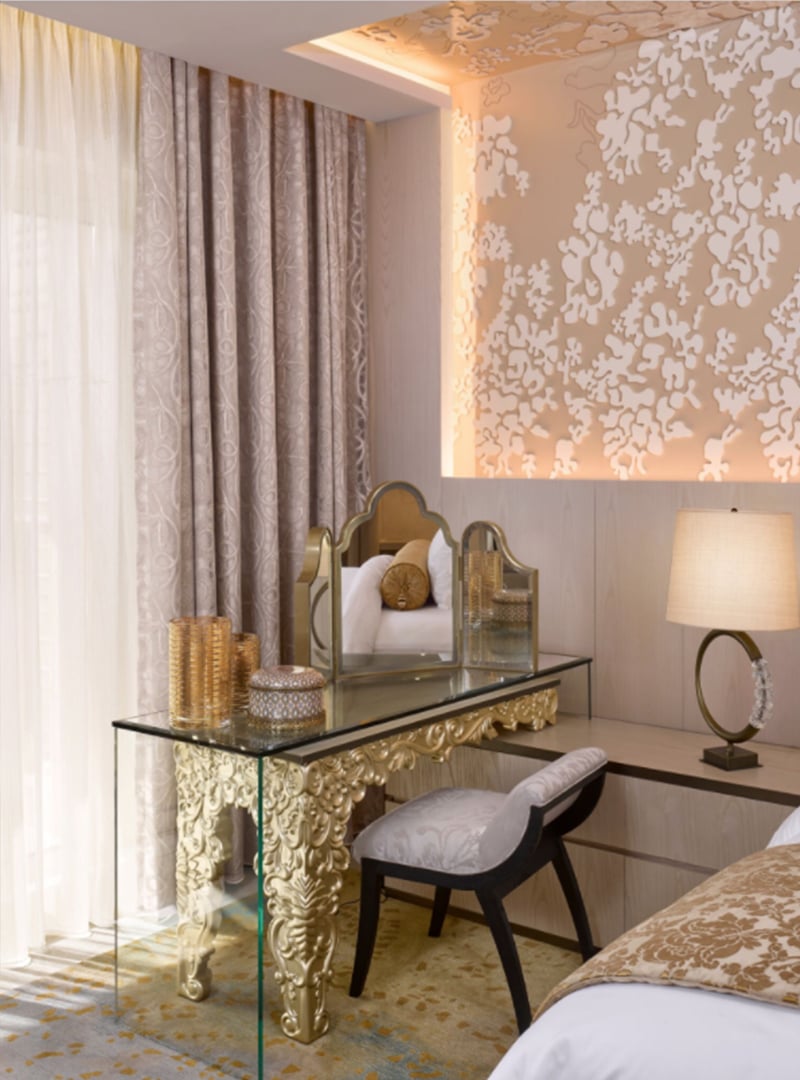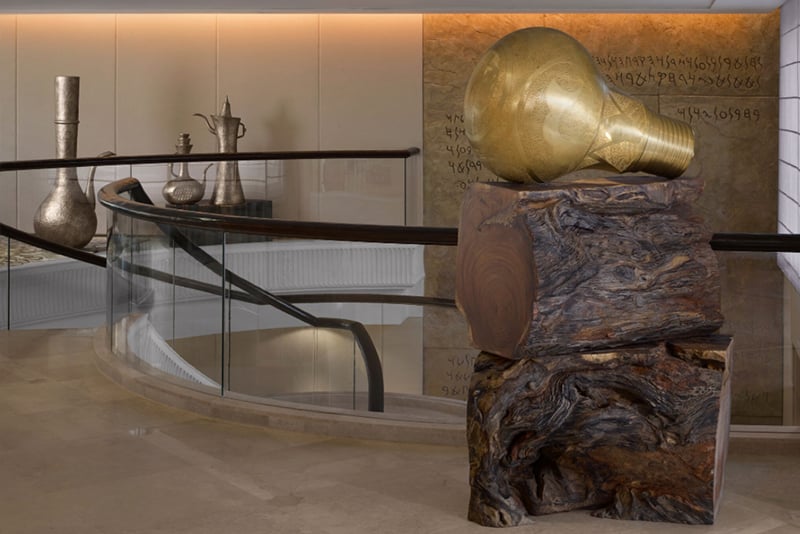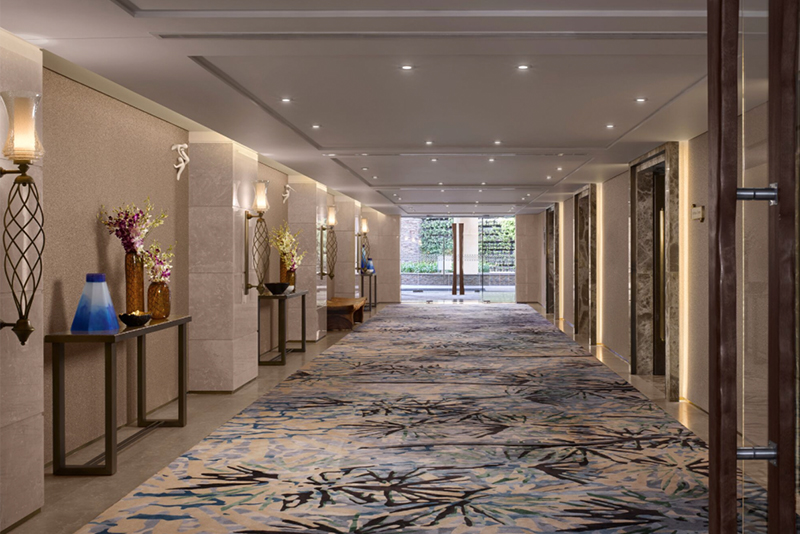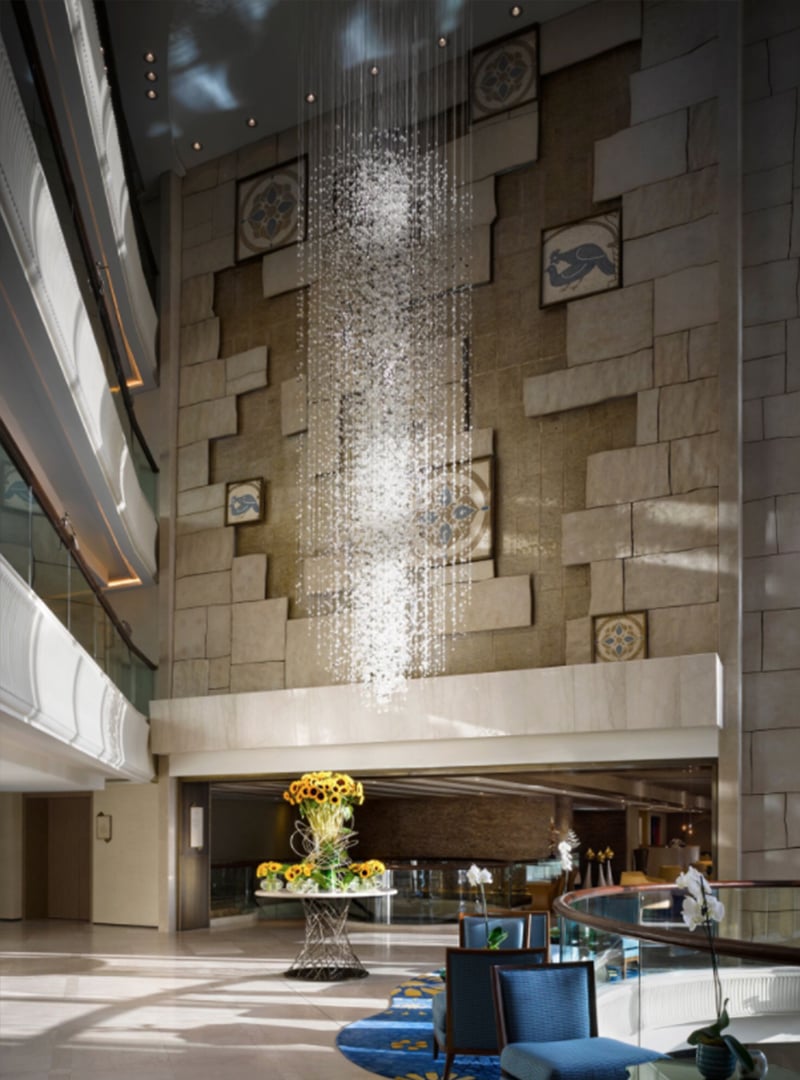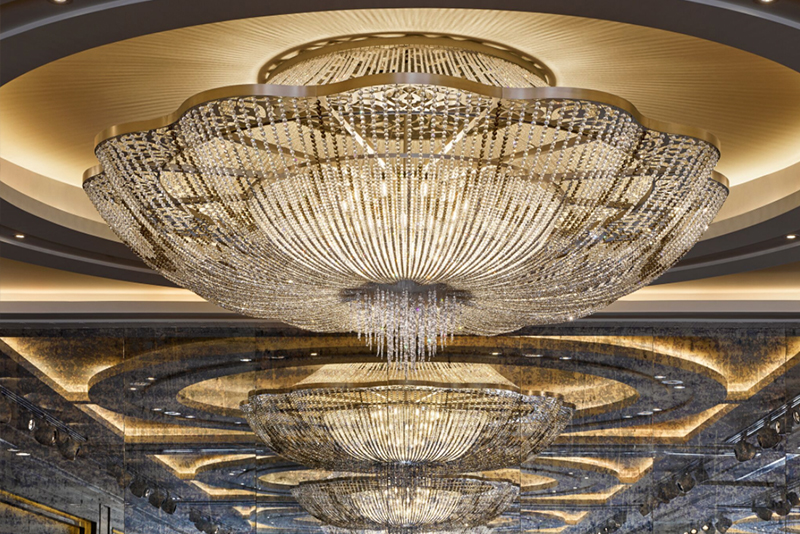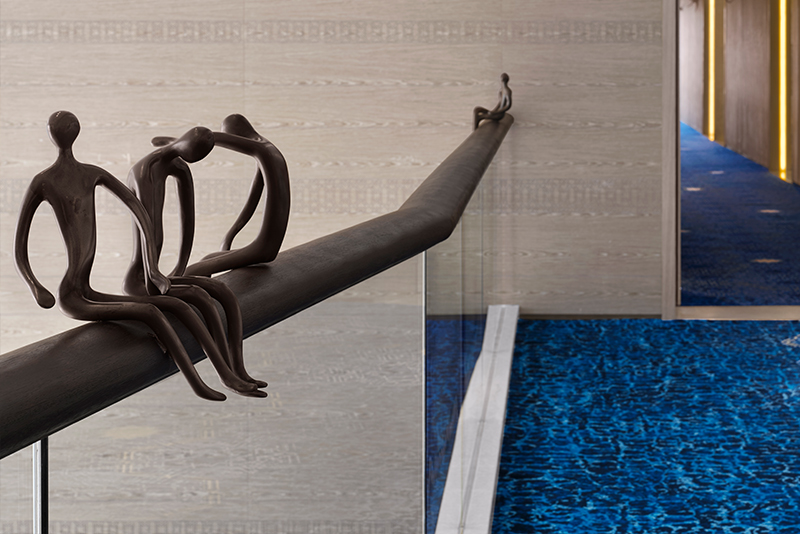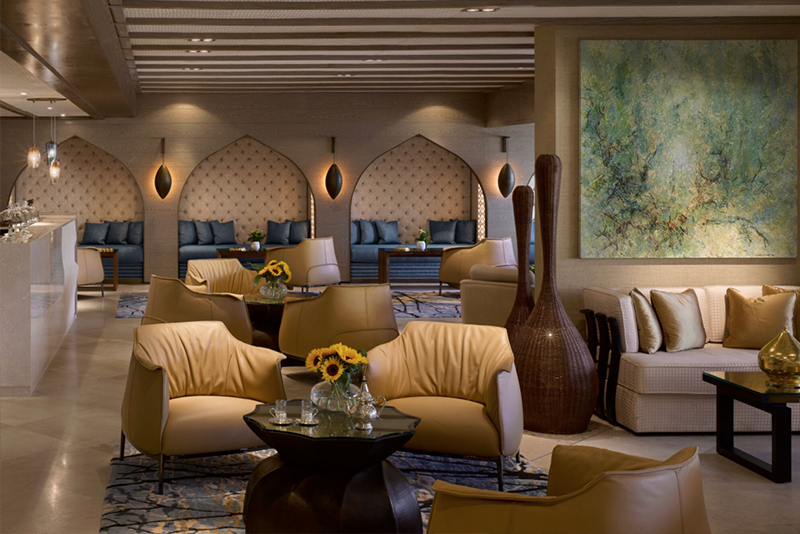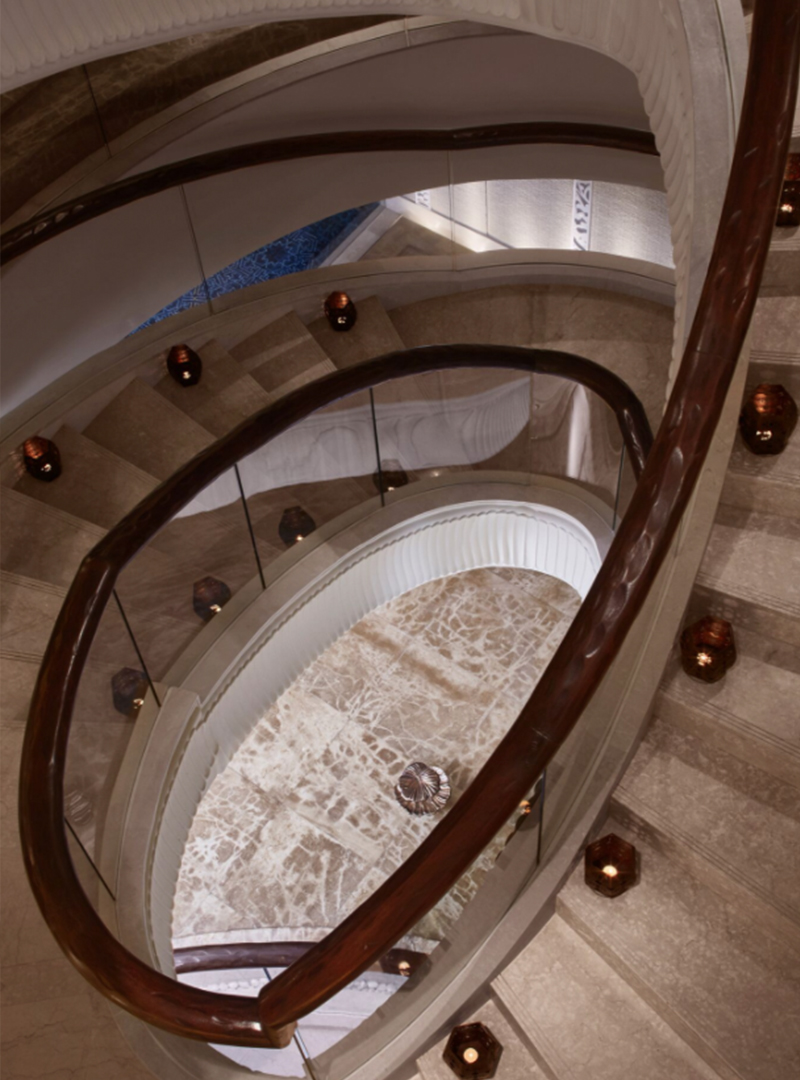Beiruit's historic Summerland Hotel reopened this autumn as the Kempinski Summerland Hotel and Resort. The new $500-million project is owned by the Societe Generale d’Enreprises Touristiques, a Saudi-Lebanese joint venture, and managed by Munich-based Kempinski Hotels.
“We changed the structure and the look and feel, but we kept some key features with which locals have emotional ties, such as the waterfall and sandy beach,” GM Dagmar Symes said of the historic property's redesign, which was created with California-based Hirsch Bedner Associates.
In designing the Kempinski Beirut, lead HBA designer and partner David T’Kint said, the team took inspiration from natural elements, such as the cedar tree forest, sunshine and blues of the Mediterranean Sea, as well as places of cultural significance, like Mount Lebanon and the Byblos ruins. Various aspects of the Lebanese culture were also reinterpreted to create a continuous thread throughout the property.
At the hotel’s entrance, beige flooring was cut to include a Rub el Hizb pattern—the eight-pointed stars derived from the traditional Muslim symbol. A water wall reaches the top of the nearly 33-foot high ceiling, symbolizing the mountains and the water that flows through them.
On the right side of the lobby, the walls are fully clad with grey wood, inspired by the cedar tree forest. Wood planks of various widths capture the texture and natural form of the tree celebrated in Lebanese history. Arabesque motifs are etched into several wood planks on the walls.
The hotel also has an original art collection by Lebanese artists living in the country or abroad. A 23-foot-tall chandelier constructed of clear and amber-toned glass spheres hangs in the lobby. The interior façade has dozens of figures perched on the guard rails supporting this same concept. The edges on which they sit have a profile inspired by the architectural detailing of the Byblos ruins. As a final touch, there are area rugs in arabesque patterns and bright tones.
The lobby lounge recalls a traditional Lebanese home. Low beamed ceilings have insets of woven textures, reminiscent of the country’s architecture and fishing culture. There are carved screens between seating areas to create semi-private retreats. Grand arches are raised above individual seating arrangements. There is also a terrace with a view of the sea and private beach.
The lobby bar, meanwhile, has a Mashrabiya-inspired screen. Surrounding the bar is an area with small seating arrangements with scattered rugs in teals and browns, also reminiscent of the cedar tree and Lebanese sky.
A staircase that leads guests to the bar (and all-day dining) has a handrail inspired by the branch of the cedar tree. Each landing represents a body of water with an infinity-edge detail to create the sense of walking through the water between spaces.
The bar has burgundy and teal throughout, said to reflect the country’s vineyards and winemaking culture, along with reflective finishes. The ceiling has insets of oval mirrors and walls are sculpted with two types of carved screens backed by light and mirror. Metal and wood screens with arabesque patterns are also prominently featured in the space.
The dining venue was inspired by mint, a key ingredient in Lebanese cuisine. As such, the interiors use the colors of green and teal amid a beige background. The ceiling is wood-planked in white and grey, while upholstered wall panels have carved white architectural screens in decorative patterns. A variety of buffet counters, including a Saj, are arranged within the space. The room makes use of natural light from the terrace and houses a green wall on the outer side of the ballroom.
The ballroom was designed as a white box with arabesque patterns engraved into the walls and ceiling. Hues of white and warm colors are juxtaposed by grey tones. The carpet is patterned in grey biomorphic designs and is complimented by draping chandeliers in similar shapes overhead, made of crystal and laser cut metal. Again evoking the cedar tree forest, the wood-clad walls in the function rooms have various widths of planks. The doors are engraved with cedar leaf patterns, and the carpet designs reinterpret the needles and blossoms of the cedar trees in tones of grey and green.
Guestrooms and suites are decorated with a combination of strong lines and geometric patterns, with architectural lighting highlighting the feature wall above the headboard, yet again a reinterpretation of the cedar tree flower. The design of furniture handles was inspired by the seed of the cedar tree. The bathroom has a combined shower and tub in carved beige stone. Light slots are adorned with a glass Mashrabiya pattern, recalling the screen design located at the bed.
The ceiling of the presidential suite has a reclaimed piece of architecture retrieved from the old Summerland building and integrated into a new design. All of the walls in the dining area and lounge are clad in wood and sculpted with both small and oversized patterns. The doors of the lounge open into a study. Handwoven carpets inspired by the texture of cedar tree bark are a backdrop to arabesque patterns. Mother of pearl inlays appear in small details of archways and furniture. The bathroom has a freestanding tub.
The bridal suite uses a neutral color palette, with gold and burgundy accents. There is a lounge inspired by the Majlis, a triptych mirror, and the wall behind the bed with mother-of-pearl and engraving.
